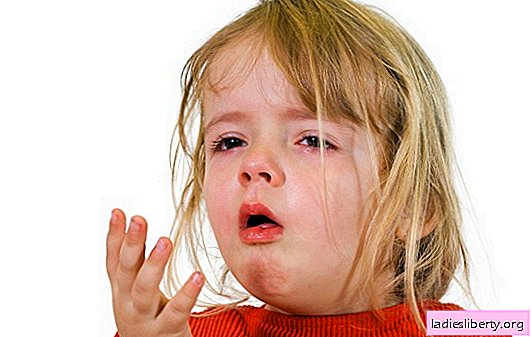
Many breeders are faced with the problem of hair loss in their beloved pet. Almost all dog breeds go through a molt period twice a year. But often other causes of a hormonal and non-hormonal nature lead to the disease, which requires special attention and treatment.
Natural seasonal molt
If the dog's hair falls out, you need to identify the cause. For a start, natural molting should be excluded. This is a normal process that takes place in the fall and spring. An animal needs molting to change its coat. With the onset of spring, winter and warm wool is replaced by a shorter summer coat, and by autumn the process of warming is repeated again. The first hair loss occurs in puppies aged three to ten months. The breed of the dog affects the intensity. Long-haired dogs seem to molt more than their smooth-haired brethren.
Some owners, for faster moulting, include vitamin A in their pets ’diet. It is important to brush the dogs regularly to help get rid of the abundance of hair in the apartment. To avoid the presence of tangles in long-haired breeds, animals must be combed and cut in time. When the dog’s hair does not fall out during the molting period, this is already an alarming symptom. Especially if the pet begins to itch a lot, you need to find the reason and conduct the appropriate therapy.
Hormonal disorders
Hormonal malfunctions in the pet's body often lead to unplanned molting. In this case, the hair will fall out strongly, but symmetrically.
Among such violations can be identified:
Violation of the production of growth hormone. This is more characteristic of males and is observed during puberty;
ü a large amount of the hormone cortisol. In addition to baldness, a dog can often have infectious diseases, excruciating thirst and excess weight;
üestrogen in excess. This hormone leads to swelling of the foreskin in males, and hair loss in the perineum and around the females;
Lack of estrogen can be observed in sterilized female pets. In this case, the hair becomes thin and hair growth slows down;
Hypothyroidism. In this condition, thyroid hormones are not enough, lethargic behavior is noted in the dog, hair is thinning, bald patches form.
To reliably detect hormonal disorders, you need to visit a veterinarian who will help determine the disease and prescribe effective medications.
Non-hormonal causes of hair loss
When a dog has no hormonal problems, other causes need to be identified that lead to profuse hair loss.
The most common causes include:
Lack of vitamins. The wrong diet leads to this. The owner must ensure that your pet receives all the important trace elements and minerals. If necessary, you can add healthy vitamins to food;
An allergic reaction. One of the most common reasons why a dog falls out is allergy. It can occur on food and various goodies, on shampoo, medicines, household chemicals and other synthetic materials. The hairline in the animal begins to fall out in shreds, the dog itches, scratches itself and licks these places. Unlike dry food, natural foods are less likely to cause allergies;
· The presence of parasites, whipworms and fleas. To identify them, you need to examine the hips and tail of the animal at the base. You can pick them up while walking or after talking with other dogs. If a dog has dandruff, hair begins to fall out, the pet becomes restless and painfully itchy, fleas may be the cause. To remove these parasites, you will need special funds from them, which can be purchased at a veterinary clinic or pet store. Itch mite also leads to baldness. In this painful and contagious disease, the hair falls in the region of the eyelids and corners of the mouth. To get rid of this parasite, you will have to pass a special analysis to prescribe effective therapy;
· Severe stress. This factor can also lead to loss of hair. Small breeds of dogs, such as Chihuahuas, are often more stressed. Noisy games and sudden movements can scare them. Therefore, you need to try to give them a quiet sleep and life, and get rid of unrest;
· weak immunity. This can be observed after previous illnesses and operations. Therefore, it is important in this period to include useful minerals and vitamins in the pet's diet;
· ringworm. This unpleasant disease is also the cause of baldness. Symptoms include the appearance of round, crusty patches with fuzzy hair, with a reddish ring in a circle. The animal itches, peeling of the skin is observed. In such a situation, you need to urgently consult a veterinarian to quickly stop the disease and prevent infection of the family.
Treatment and Prevention
Dog hair should be properly looked after. You can not use shampoos and conditioners that people use. An improperly chosen remedy can contribute to the appearance of allergies, thinning and loss of hair. It is not recommended to wash your favorite pet in hot water. Regular brushing and combing are mandatory. Wool should be treated with special drops that will help protect the dog from parasites. It is necessary to monitor the diet so that there is no shortage of healthy vitamins. Nutrition must be complete. And as a prevention of various ailments, vaccinations should be done on time.
If any disturbing symptoms appear, you need to visit a veterinarian. He will evaluate the animal’s health status, examine the coat and eyes, make the required tests and find out why the dog has hair loss. The veterinarian will determine the presence of fleas, helminths and other diseases, and will prescribe therapy in a timely manner. If you follow these simple rules and do not delay the visit to the veterinary clinic, you can protect your pet from many unpleasant diseases and their consequences.











